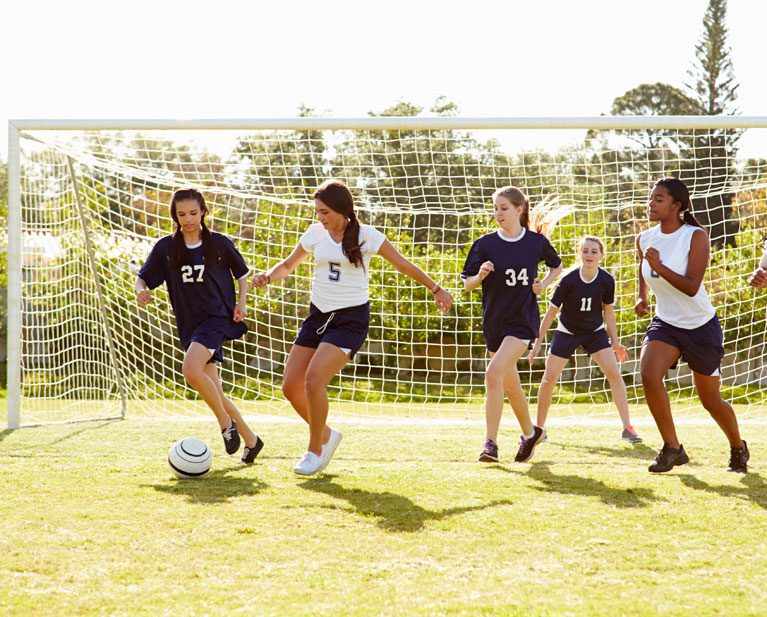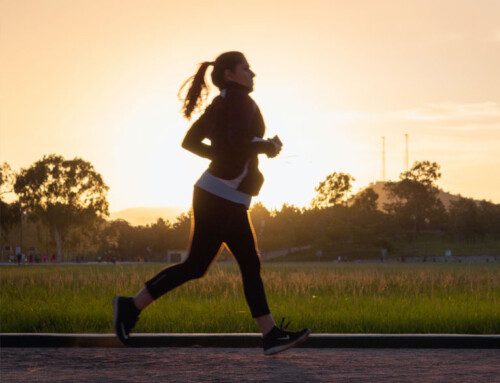For many young athletes, participating in sports provides opportunities for strength, conditioning, discipline and team building. Mastering a sport in high school can even lead to collegiate scholarships for some.
Too often, injuries can negate the potential benefits of exercise and compromise future aspirations for student-athletes.
How Common are Injuries?
1 out of 10 children experience sports-related injuries a year, with higher overall incidence and greater severity of injury in boys.
Certain injuries are seen more frequently in girls, however. For example, young female athletes are six times as likely to suffer ACL tears as young males. These injuries can have lasting impacts, such as a higher risk of developing degenerative arthritis later in life as is seen with ACL injuries.
Causes
An epidemiological report of sports-related musculoskeletal injuries for young athletes in the U.S. found the following factors were more consistently associated with overuse injury:
- A sudden increase in the intensity, duration, and volume of physical activity
- Poor overall conditioning
- Insufficient sport-specific training or poor training techniques
- Inappropriate equipment for the sport
Preventive Measures
Fortunately, all the above factors are modifiable and can be avoided.
With the proper training, many injuries are largely preventable. Here are three simple things that can prevent some of the most common factors contributing to injury in young athletes:
1. Neuromuscular Warm-Up
A 10-15 minute neuromuscular warm-up with every training helps establish body control, coordination, proper knee stabilization, balance, and overall body movement. When athletes adopt safer movement patterns, they reduce injury risk during landing, pivoting, and unexpected loads while in motion.
Plyometric training combined with technique training and feedback to athletes regarding proper form are the standard components of programs that effectively reduce ACL injury rates. Some examples of neuromuscular warm-up activities include:
- Single-leg stance: throwing a ball with a partner
- Squats: walking lunges
- Jumping: lateral jumps
These warm-up activities can vary based on the demand of the sport to help the athlete develop the movements necessary for their sport.
2. Generalized Strength and Conditioning
Non-specific conditioning and strength training play an essential role in ensuring young athletes are coordinated, strong, and stable as they progress through their athletic careers.
Strength and conditioning programs will vary based on the athlete’s age and ability but should include the following:
- Exercises that strengthen all parts of the body, not specific muscles (Ex: strengthening glutes and hamstrings, not just quadriceps)
- Coaching cues for proper lifting technique
- Not increasing resistance until the correct form is mastered
Athletes are more likely to prevent injury when they have better control of how their body moves in space by developing the strength needed to stabilize the core, distribute bodyweight and resist force.
3. Avoid Sports Specialization Too Early
Imagine a car that drives the same exact route daily route for years with no maintenance. That car will eventually start to wear down in predictable places that sustain repetitive stresses. Starting specialization too early can have similar effects on young athletes.
Training and focusing on just one sport for 8-12 months of a year increases the risk of overuse injuries. To combat the risk of these injuries:
- Avoid sports specialization before maturation
- Diversify physical activity through cross-training
- Take regular breaks and play other sports
Ideally, specialization should not occur before adolescence to give the athlete time to develop foundational movement skills before putting a big emphasis on sports-specific skills.
The benefits of playing sports far outweigh the risks. These tips will help young athletes develop a fun and enjoyable appreciation of movement. By setting good habits early on, children will develop a healthy relationship with exercise, providing them with lifelong skills for taking care of themselves. To find out more about injury prevention for student-athletes, schedule an appointment with your SetPT therapist today!





